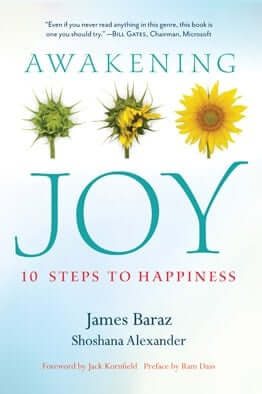
Ten Breaths to Happiness
Touching Life in Its Fullness
By Glen Schneider
Foreword by Thich Nhat Hanh
Parallax Press, 2013
Soft cover, 108 pages
Reviewed by Louise Dunlap, True Silent Teaching
“Our hands imbibe like roots, so I place them on what is beautiful in this world” (Francis of Assisi).

Ten Breaths to Happiness
Touching Life in Its Fullness
By Glen Schneider
Foreword by Thich Nhat Hanh
Parallax Press, 2013
Soft cover, 108 pages
Reviewed by Louise Dunlap, True Silent Teaching
“Our hands imbibe like roots, so I place them on what is beautiful in this world” (Francis of Assisi). So begins Glen Schneider’s chapter on the Ten Breaths Practice. We place our hands on our bellies. Our hands are like roots touching deeply into ourselves. And we use them to count ten breaths, completely bypassing words and brain. We do this practice at moments when something beautiful touches us—the moon shining through bare branches, a dear friend’s compassion and goodness. As we train our mindfulness on beauty for the span of ten breaths (thirty seconds), we open new neural pathways to happiness, which can—with practice—replace habitual negativity, pain, and even trauma.
While the Ten Breaths Practice is ancient, Schneider connects it to neuroscience with explanations that flow easily enough for beginners. As Einstein once said, “Everything should be as simple as possible, but not simpler.” This fifty-page book is like a poem in the sense that every word resonates, nothing is out of place, and the images carry us beyond our usual thinking.
For me, what’s especially beautiful is the way Schneider, a trained naturalist, helps me touch what seems “out there” in Mother Nature. For instance, he happened to look up at a 152-foot redwood tree that stands outside city hall in his home town, and he realized it was time to stop on the busy sidewalk, place his hands on his belly, and practice. “On the eighth breath,” he tells us, “a glowing feeling arose in my chest and spread to my face with a huge, blossoming smile. I felt a barrier in myself dissolve and the tree became alive.” As Thay tells us, Mother Earth is not just “out there” but also inside ourselves.
Ten Breaths to Happiness deepens one of my favorite themes in Thay’s teaching, his use of the word “touch.” When Thay urges us to “touch the wave, touch the water,” there is something beyond philosophy about this, something very much of the body. With hands on the belly for ten breaths, and those mysterious neural pathways actually opening up, I can feel my body at one with my mind.
Besides talking us through ten breaths, Schneider (a Dharma teacher ordained by Thay in 2011) offers appendices of other Earth-centered practices, including a beautiful Touching the Earth.

The Green Boat
Reviving Ourselves in Our Capsized Culture
By Mary Pipher
Riverhead Books, 2013
Soft cover, 240 pages
Reviewed by Louise Dunlap, True Silent Teaching
Mary Pipher is widely known for her healing book, Reviving Ophelia, about teenage girls in crisis. Now—amidst extreme weather, disappearing species, and fouled water—she turns her attention as a skilled therapist to our relationship with Mother Earth. As climate change and related crises accelerate before our eyes, she hones in on some crucial questions: Why do so many humans seem frozen or indifferent, caught in cognitive dissonance? How can we move beyond our own shock and paralysis toward actions that shift the balance and avert suffering?
Pipher’s hallmark is real-life stories—wise teaching tales of young mothers, grocery clerks, ranchers, and artists—mostly from her beloved state of Nebraska. But the story at the heart of this book is Pipher’s own. After reading the truth about climate disaster in Bill McKibben’s Earth during a summer of record heat waves, this grandmother and longtime friend of Mother Earth was devastated. She recalls the night her grown daughter, a mother herself, asked point-blank: “Does this storm mean climate change?” Pipher had to gently tell the truth and watch the pain in her daughter’s face.
Afterwards, she called a small group together to begin a coalition that would temporarily stop the Keystone XL pipeline from promoting climate-threatening tar sands fossil fuel. This group worked hard but caringly, even joyfully. They shared meals, played with children, and walked out on a bit of remaining prairie under the stars. Through actions such as appearing at statewide festivals and carrying wildflowers into their State Capitol, they spoke truth in ways others could hear. Their movement created a common cause between conservative ranchers and environmentalists. Separation and discrimination melted away in shared concern for Mother Earth.
Thay’s teachings on interbeing and ecology permeate this book and are often quoted. When Pipher writes of how she deals with the painful feelings that come with full awareness of climate catastrophe, I hear Thay’s voice reminding us of the Pure Land available in the present moment. Pipher cultivates “the sparkling moment” and knows “how to step outdoors and look for the green heron or the redolent milkweed blossom.”
For those of us called to revive Mother Earth, Mary Pipher re-minds us that reviving ourselves is part of the process, and that this practice is the essence of hope.

Awakening Joy
10 Steps to Happiness
By James Baraz and Shoshana Alexander
Parallax Press, 2012
Soft cover, 294 pages
Reviewed by Karen Hilsberg
In the words of author and teacher James Baraz, “Joy and happiness are more than just good ideas. They can be the baseline on which we live our lives. The purpose of this book is to show how to access that switch inside and live life with greater joy.” Awakening Joy: 10 Steps to Happiness is based on the wisdom gleaned from twenty years of teaching this ten-session course in person and online to thousands of participants. It emphasizes the key principle that our joy and happiness are up to us. This is not a workbook, but it is a self-led course that can be read individually and also used as a guide for leading the effective ten-week class in Sanghas, jails, prisons, schools, clinics, and book groups.
Each chapter focuses on one of the key steps for awakening joy, such as: “Inclining the Mind toward Joy,” “Mindfulness,” and “The Bliss of Blamelessness.” Each chapter contains a self-contained teaching on the selected topic in a readable format, offering practices that can be implemented one week at a time. The authors integrate a balanced and seamless use of anecdotes highlighting successes of past course participants, their own personal insights and transformations, current findings in neuroscience, and the teachings of the Buddha, along with modern-day applications for everyday life. The readings evoke the feeling of sharing an intimate conversation with a wise teacher over a cup of tea. They are gentle, personal, and helpful.
My favorite part of the book is the story of Baraz fathering a son when he was in his early twenties. He shares about his pain of being estranged from his son for over twenty years and then about their reunion and reconciliation using many of the principles shared in this book. It is a beautiful example of how we can use our own suffering as the impetus toward compassion, healing, and especially joy. In the introduction to the paperback edition, Baraz shares several letters he has received from past course participants. The best testimony for the healing power of joy is expressed in this excerpt: “Seeking joy after thirty-one years in prison can be a daunting endeavor, but your insights have helped.” The lessons offered in Awakening Joy are highly relevant for beginning and experienced practitioners of mindfulness because they bring a fresh and unique perspective to many of the core teachings and practices of the Buddha.

